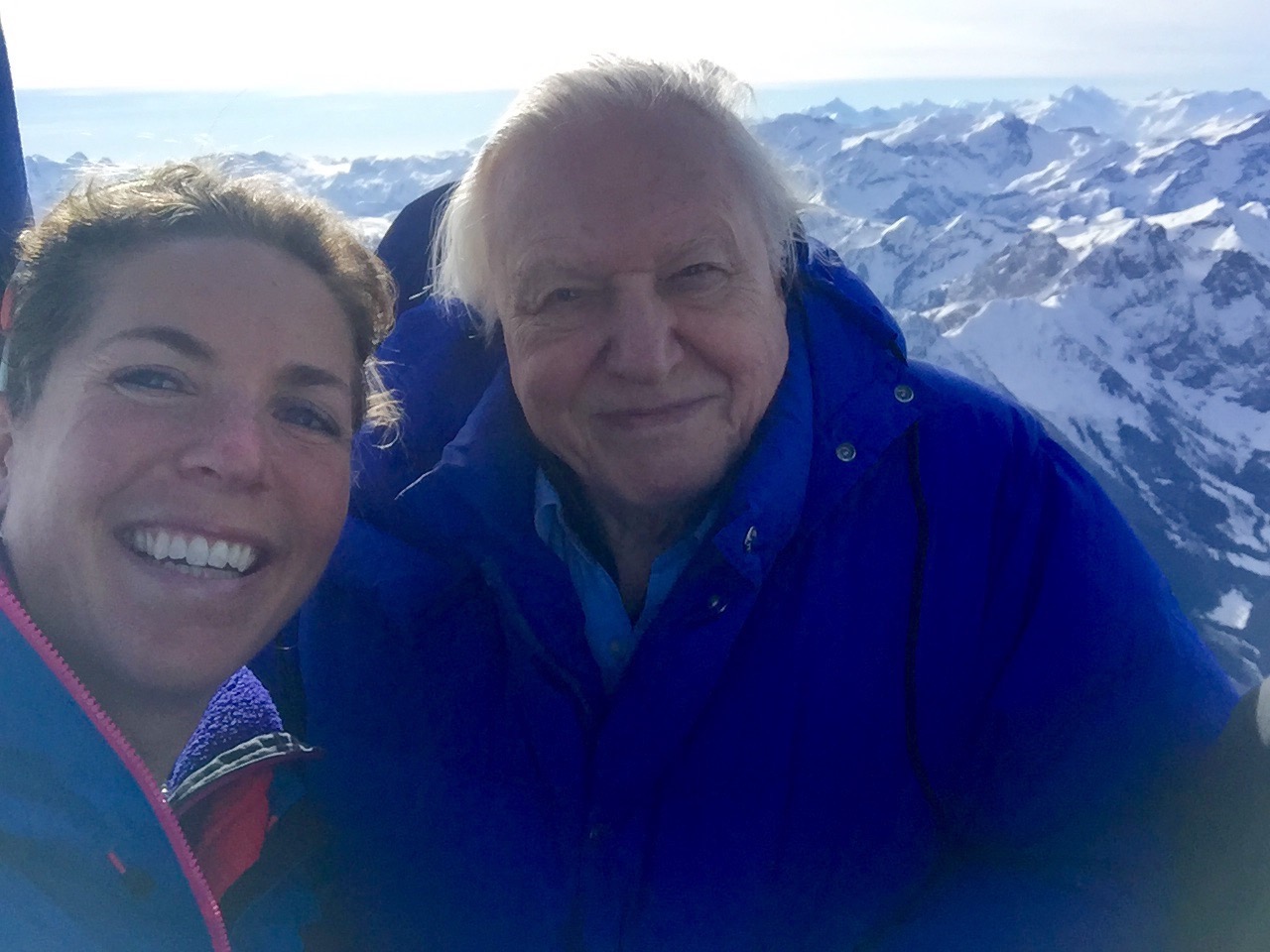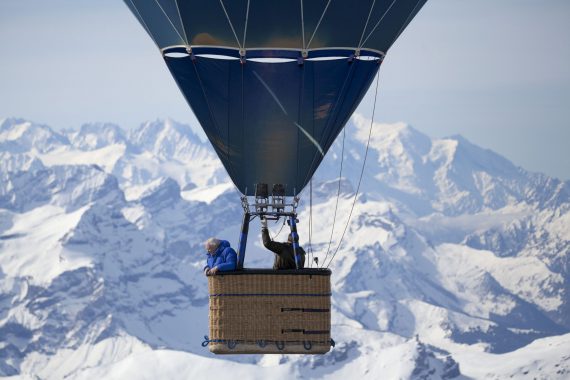Profile: Dr Lucy Obolensky

Role Expedition medic, programme lead for the global and remote healthcare masters course at Plymouth University, locum GP and emergency department staff grade doctor
Location Filming in the Swiss Alps
06.00
It’s an early start for filming Planet Earth II. I’m working for five days with the crew at Château d’Oex in Switzerland. We’re filming the opening scene of the series with Sir David Attenborough in a hot air balloon over the Swiss Alps.
Several of my colleagues were medics on Planet Earth II, but I was the lucky one who got to work with Sir David. My colleague James Moore took the other job, which involved camping for 16 days with the penguins and was far less glamorous and far harder work. I couldn’t do that role because my little girl was only five months old at the time of filming.
My role here is to support Sir David and the crew if they need medical help, particularly because we’re at altitude. There are only around 10 of us to look after on this trip, but on my next filming trip to Antarctica I’m the only doctor for 42 crew members.
07.00
Everyone is checking the weather to see if we can fly the balloon today. At this point, I help wherever I can, making the tea and seeing if there are any bags to move. I check that Sir David is okay, and if there’s anything he or the rest of the crew need.
08.00
The weather is great today – a beautiful clear blue sky – so we head to the balloon. We have to get all the kit into the right place, prepare the balloon and wait for it to be inflated, which takes a while. Then there are lots of safety checks. I check my medical kit and load it into the balloon. There is not a lot of space in the balloon so I have to be decisive about what I need up there and what could wait until we land.
It’s useful that we are in Switzerland with a fantastic hospital and pre-hospital service enabling me to carry airway and resuscitation equipment. If something awful did happen we could reach quality medical care quickly – a luxury I don’t have on other expeditions.
In my role I don’t have many dramatic medical emergencies to deal with. The main task with all my expedition medicine roles is keeping everyone healthy – it’s more a public health role, making sure people are looking after themselves physically and psychologically, rather than dramatic rescue missions.
08.30
We are up in the air. During the flight, there’s a lot of rehearsing of lines and redoing the filming to get the right shots. The view is amazing. While the helicopter flies around shooting Sir David, I am crouched in the bottom of the balloon with the cameraman and producer.
Sir David is very fit, so I am there just to make sure nothing bad happens. I mainly look after simple things like making sure he has enough layers on, or keeping a spare packet of handwarmers because it gets quite cold. But I have to be prepared in case of emergency. I’ve already discussed with the balloon pilot what would happen if any of the team collapsed – what we could move around safely in the balloon, where we could lie people down, how we could do resuscitation.
12.00
We land, but have a bit of a bumpy end. The basket tips in an unexpected direction and instead of supporting Sir David I end up on top of him. Luckily, no harm is caused.
13.00
Filming is over for today – quite often the shoots are done by lunchtime. The producers go through lines with Sir David and the crew, and I run errands and help whenever I am needed.
One day we finished later because we tried to ascend the Aiguille du Midi in Chamonix, but the swift cable car took us up to 3,842m within 10 minutes so everyone felt the effects of altitude. While I advised the team how to improve their oxygen saturations with their breathing the executive producer made the decision to complete the filming from the middle station. We filmed until the light went. We were the last ones down in the cable car as it was closing and it was a lovely way to see dusk falling over the mountain range.
Image credit: BBC











